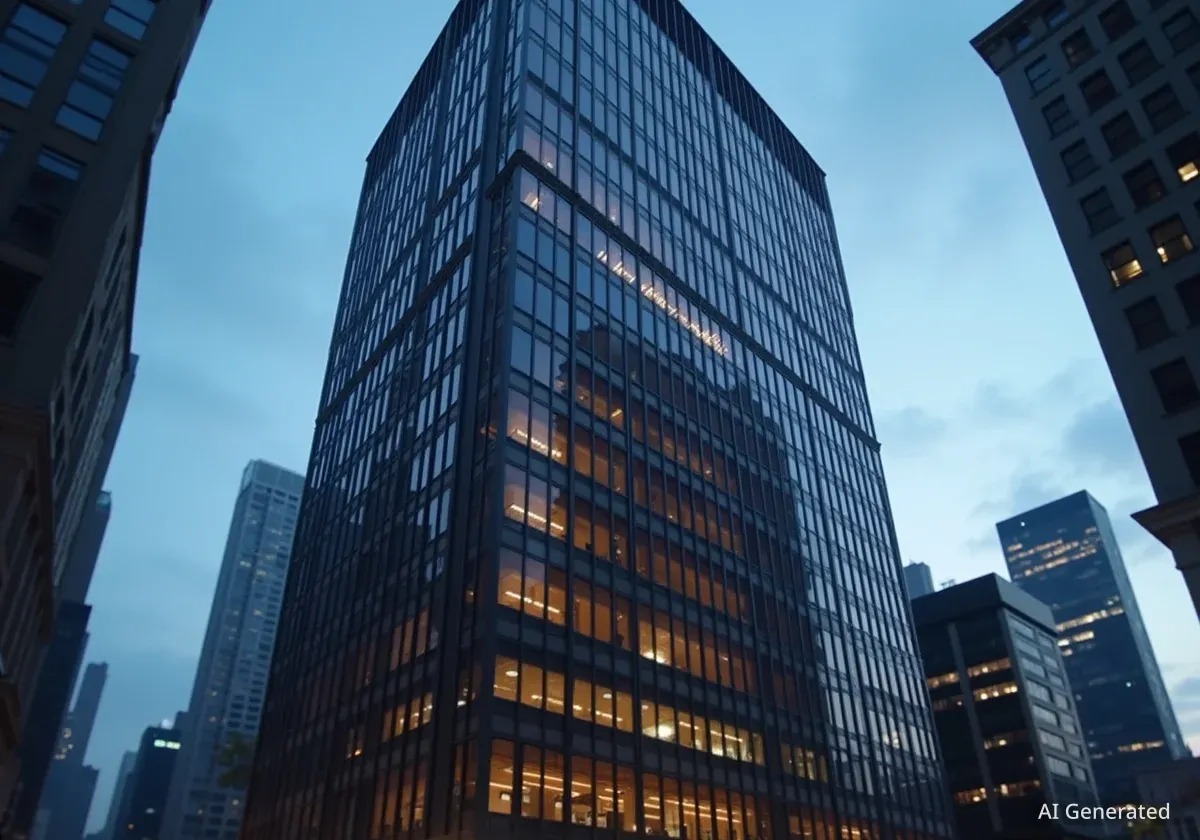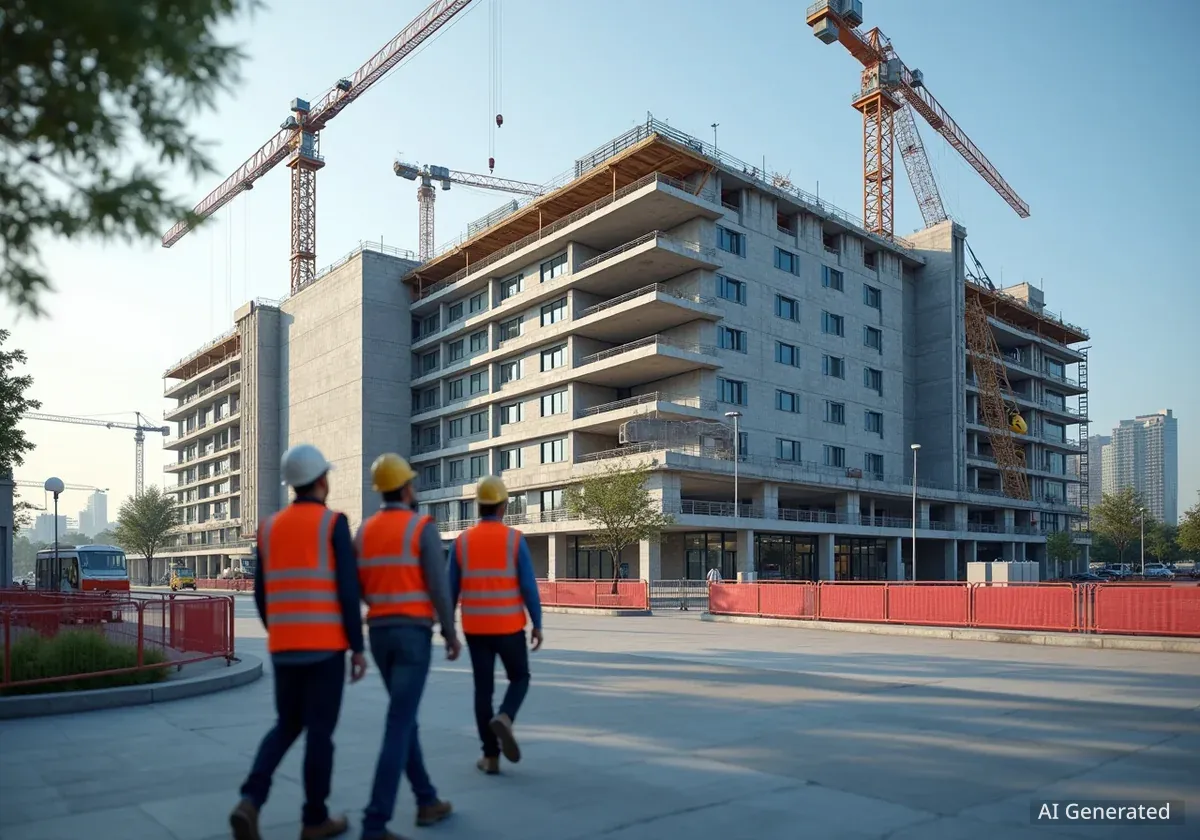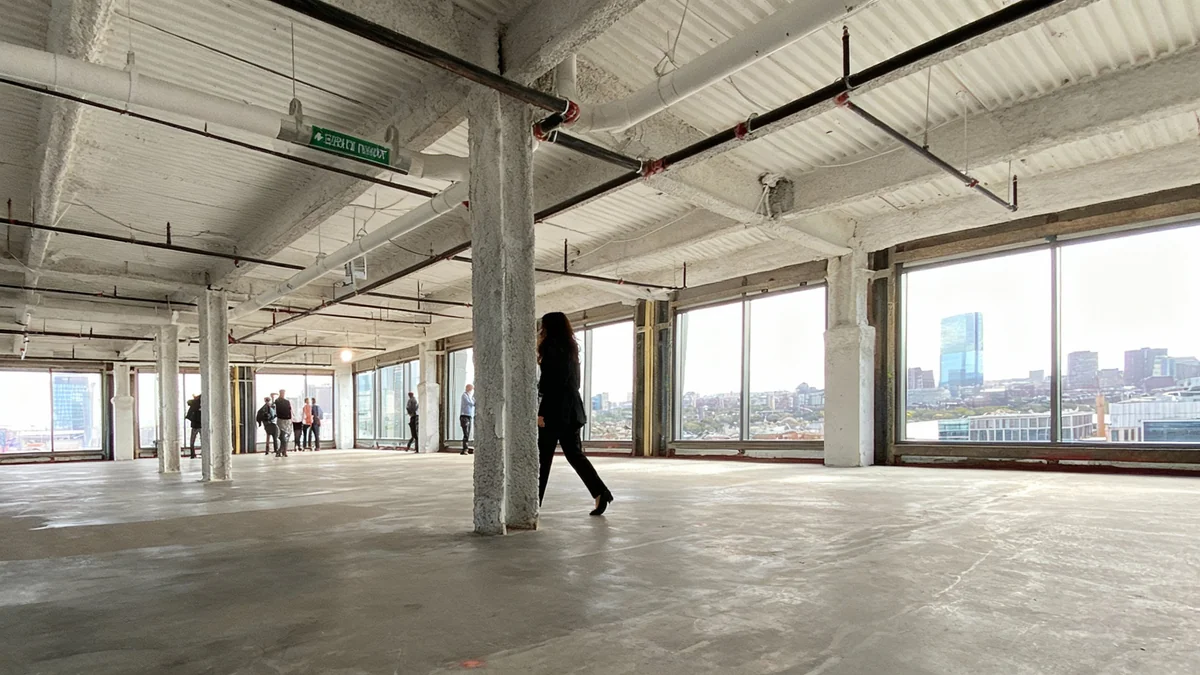Chicago is facing a dual challenge: a downtown office vacancy rate of 28% and a pressing need for more housing. To address both issues, policymakers are examining a solution that has found success in other major cities: converting empty commercial buildings into residential apartments.
The shift to remote and hybrid work has left vast amounts of office space unused, while the state of Illinois requires an estimated 227,000 new housing units over the next five years to meet demand. This situation presents a unique opportunity to repurpose existing structures to create new homes and revitalize the city's core.
Key Takeaways
- Chicago's downtown office vacancy rate has reached 28%, largely due to the rise of remote work.
- Illinois needs to build approximately 227,000 new housing units within five years to meet demand.
- Converting commercial buildings into residences is being proposed as a solution to both problems.
- New York City provides a successful model, using tax incentives to encourage developers to undertake conversion projects.
- Experts suggest Chicago could accelerate its own conversion efforts by streamlining regulations and revising affordability requirements.
The Dual Challenge: Empty Offices and a Housing Deficit
The landscape of downtown Chicago has changed significantly in recent years. With many companies embracing flexible work arrangements, office buildings that once bustled with activity now sit partially empty. The current office vacancy rate stands at an estimated 28%, a stark figure that reflects a fundamental shift in how and where people work.
While this surplus of commercial space poses an economic challenge, the city is simultaneously grappling with a severe housing shortage. According to recent analyses, Illinois must double its current rate of housing production to build the 227,000 units needed over the next five years. A substantial portion of this new housing is required in and around the Chicago metropolitan area.
This convergence of excess commercial real estate and a deficit in residential units has led city planners and developers to focus on adaptive reuse, specifically the conversion of office towers into apartment buildings.
What is Adaptive Reuse?
Adaptive reuse is the process of repurposing an existing building for a function other than what it was originally designed for. In this context, it involves transforming commercial office structures into livable residential spaces, which can be faster and more sustainable than building from the ground up.
New York City's Conversion Model as a Blueprint
To understand the potential of this strategy, many are looking to New York City, which has implemented policies to encourage such projects. The city has demonstrated that with the right incentives, office-to-residential conversions can be both financially viable and beneficial for the urban environment.
A prominent example is the former headquarters of Pfizer Inc. in Midtown Manhattan, which is currently being redeveloped into 1,600 new apartments. This project is part of a larger trend in the city.
Manhattan's Conversion Statistics
According to data from the real estate services firm CBRE Group, Manhattan has already completed 22 office-to-residential conversions, with an additional 29 projects either planned or currently underway. This proactive approach is helping to stabilize property values and add housing stock quickly.
A key driver of New York's success is its policy framework, which collaborates with developers rather than imposing strict mandates. The city's 467-m tax abatement program, for instance, offers developers 35 years of property tax certainty in exchange for including a percentage of affordable units in their projects. This incentive makes complex conversions more financially attractive.
Chicago's Current Approach and Its Limitations
Chicago has already seen some progress in this area, with 11 commercial-to-residential conversions completed and nine more in development. However, the city's approach has been more cautious and case-by-case compared to New York's broader framework.
Chicago often relies on Tax Increment Financing (TIF) for financial assistance, which is allocated on a project-by-project basis. Furthermore, the city's Affordable Requirements Ordinance (ARO) presents a significant hurdle for some developers.
The ARO currently mandates that residential projects with more than 10 units that require a zoning change must designate 20% of the units as affordable. While the goal is to promote equitable housing, some experts argue this high threshold can make potential conversion projects financially unfeasible, thereby limiting the overall creation of new housing.
This contrasts with New York's model, which uses tax incentives and has lower affordability requirements to encourage a higher volume of development, leading to more housing units—both market-rate and affordable—being created overall.
Proposed Solutions for Accelerating Conversions
To unlock the full potential of its vacant office space, Chicago could consider several policy adjustments. Advocates for development suggest a multi-pronged strategy to reduce barriers and create stronger incentives for property owners.
Key recommendations include:
- Revising the Affordable Requirements Ordinance: Shifting from a strict mandate to an incentive-based model, similar to New York's tax abatement program, could encourage more developers to take on conversion projects.
- Prioritizing Conversions in City Planning: Making adaptive reuse a central component of the Central Area Plan 2045 would signal a long-term commitment to revitalizing the Loop as a mixed-use neighborhood where people live, work, and socialize.
- Reducing Bureaucratic Hurdles: Streamlining the zoning and approval processes is crucial. While the city council recently permitted conversions of ground-floor commercial spaces, expanding eligibility for more building types and simplifying regulatory steps could significantly speed up project timelines.
The Broader Impact of Repurposing Commercial Space
The benefits of converting empty offices extend beyond simply adding housing units. These projects are instrumental in transforming downtown districts from 9-to-5 business hubs into vibrant, 24/7 communities.
Because vacant offices are typically located in central areas, they are already close to public transportation, jobs, and urban amenities, making them highly desirable locations for new residents. An increased downtown population brings more foot traffic, which in turn supports local restaurants, retail stores, and cultural venues.
By turning empty corridors into lively neighborhoods, office-to-residential conversions can create a more resilient and dynamic urban core. While not a singular solution to Chicago's housing shortage, this strategy represents a significant and practical step toward addressing the city's evolving needs.





